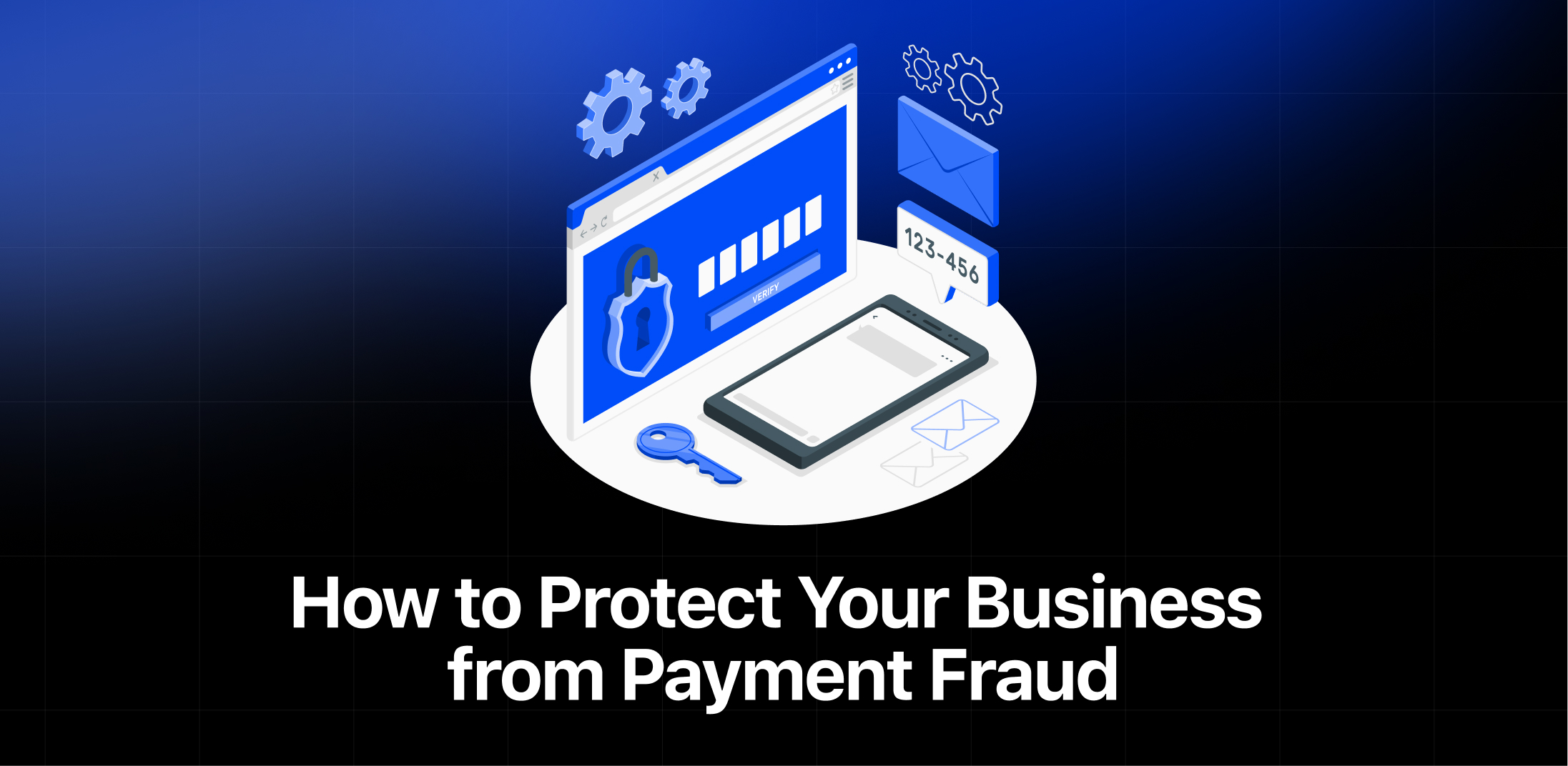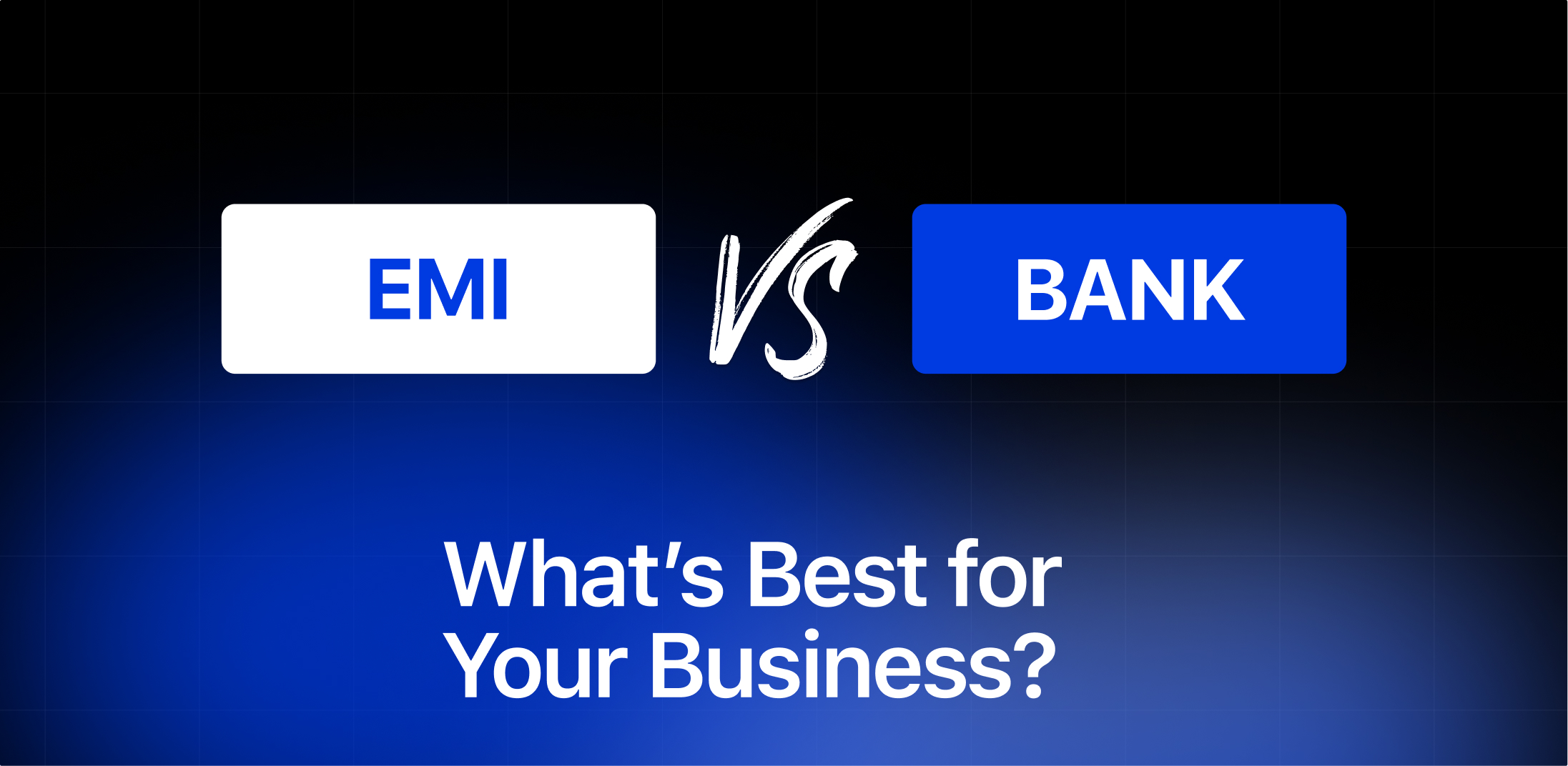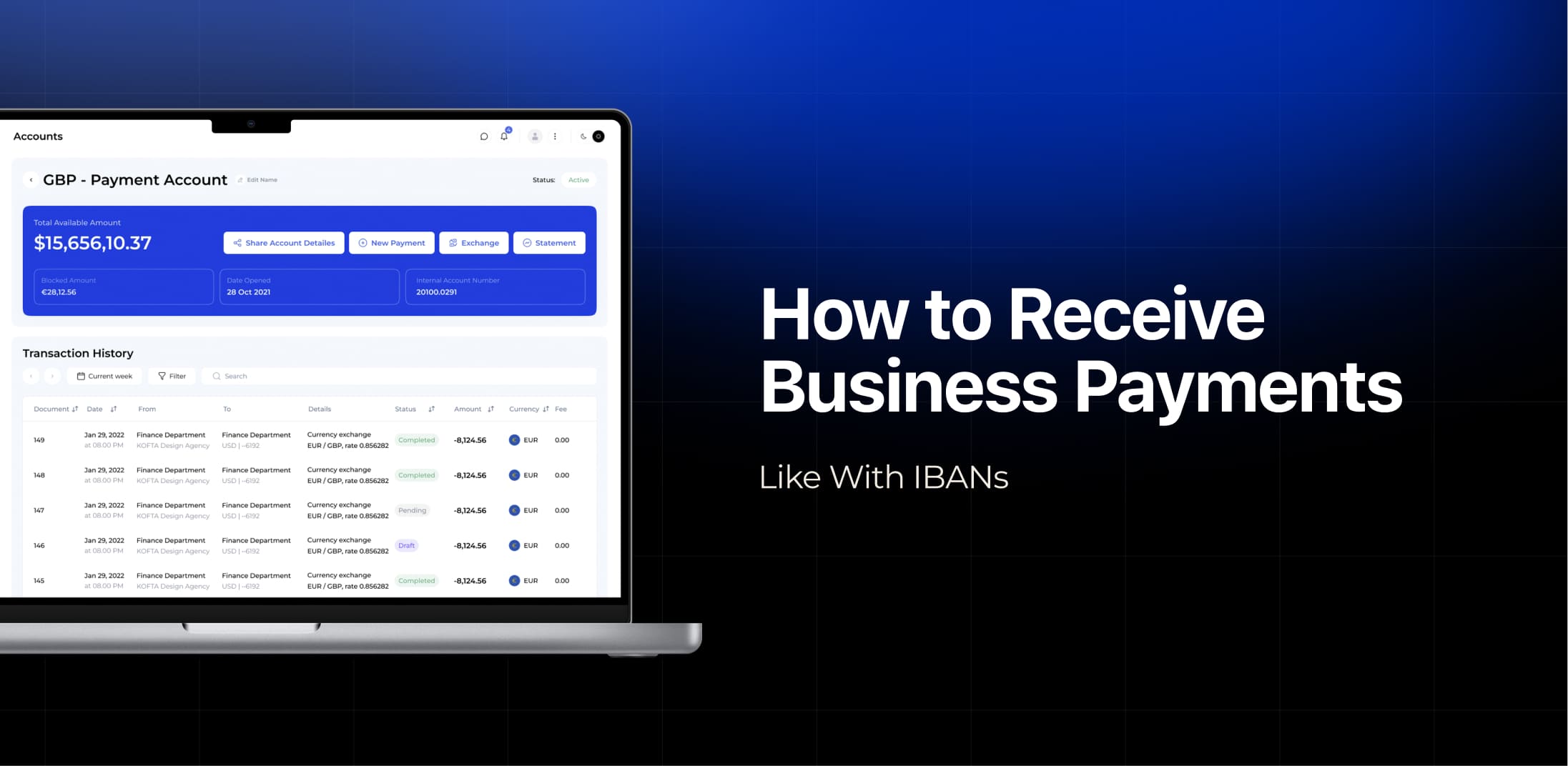Today payment fraud has emerged as a serious concern for businesses of all sizes. As online transactions continue to grow, cybercriminals are developing increasingly sophisticated tactics to exploit weaknesses in payment systems. From stolen credit card information and chargeback schemes to phishing scams, companies that lack robust security measures are at high risk of financial and operational damage.
The consequences of payment fraud extend far beyond monetary losses. A single fraudulent transaction can not only lead to chargebacks and hefty fines from payment providers but also tarnish a company’s reputation and erode customer confidence. Additionally, failing to secure payment data can result in regulatory penalties, putting long-term business stability at stake.
To effectively combat these threats, businesses need a proactive payment fraud prevention strategy. Strengthening payment security through advanced fraud detection tools, secure transaction processing, and multi-factor authentication can significantly minimize risks. Employee training on fraud awareness and continuous monitoring of payment activity are also essential in detecting and preventing suspicious transactions.
Understanding Payment Fraud

As digital transactions continue to rise, businesses must remain alert to the ever-evolving threat of payment fraud. Cybercriminals constantly refine their tactics, seeking weaknesses to exploit. To maintain secure online transactions, companies must enforce robust security protocols that safeguard their payment systems.
Fraud comes in various forms, including stolen credit card data, identity theft, phishing schemes, and unauthorized payments. One of the biggest challenges businesses face is preventing chargebacks, which occur when customers dispute transactions. While some chargebacks are legitimate, others, often referred to as “friendly fraud”, involve customers falsely claiming unauthorized payments, resulting in financial setbacks and reputational harm.
Recognizing the different types of fraud is essential for building an effective defense strategy. Companies can reduce risks by implementing fraud detection software, utilizing multi-factor authentication, and closely monitoring transaction activity.
What is Payment Fraud?
Payment fraud occurs when unauthorized or deceptive transactions are carried out with the intent to steal money or sensitive financial data. Cybercriminals continuously refine their tactics, exploiting weak security measures in payment systems and putting businesses at risk. Common types of payment fraud include:
- Credit Card Fraud. Stolen card information is used to make unauthorized purchases.
- Identity Theft. Fraudsters assume a victim’s identity to access financial accounts or complete transactions.
- Phishing Scams. Deceptive messages or fake websites trick users into disclosing payment credentials.
- Chargeback Fraud (Friendly Fraud). A customer falsely disputes a legitimate charge to secure a refund while retaining the product or service.
Recognizing these fraudulent schemes is key to securing online transactions and preventing chargebacks. Businesses must proactively implement security protocols to detect suspicious activities and protect their financial assets from fraud.
Common Types of Payment Fraud
Payment fraud comes in various forms, each posing serious financial and reputational risks for businesses. Identifying these threats is crucial for implementing strong fraud prevention strategies.
- Credit Card Fraud – Criminals use stolen or fake card details to make unauthorized purchases. This often happens when businesses lack proper authentication protocols, leaving their payment systems exposed to fraudulent activities.
- Chargeback Fraud – Also called “friendly fraud,” this occurs when customers falsely dispute legitimate transactions, claiming they never authorized the payment. This can lead to revenue loss and additional penalties from payment processors.
- Phishing Scams – Fraudsters pose as legitimate companies via emails, fake websites, or messages to trick individuals into disclosing sensitive payment information. Once obtained, these details are used for fraudulent purchases or identity theft.
- Account Takeover Fraud – Hackers gain access to customer accounts through stolen credentials or weak passwords. Once inside, they make unauthorized transactions, often leaving businesses responsible for financial damages.
- Friendly Fraud – Customers fraudulently claim they never received goods or services, seeking refunds while keeping the items. This deceptive practice is difficult to detect and prevent.
To combat these fraud risks, businesses must enforce strong security measures, conduct regular transaction monitoring, and educate customers about online safety.
Identifying Red Flags for Fraudulent Transactions
Detecting fraudulent transactions at an early stage is essential for businesses to reduce financial risks and safeguard customer trust. Fraudsters are constantly evolving their methods, which makes it critical for businesses to identify suspicious patterns before they cause significant damage.
There are several key indicators of potential fraud to watch for. Unusual purchasing behaviors, like placing unusually large orders, making multiple transactions in a short time from different locations, or discrepancies between billing and shipping details, can all signal fraudulent activity. Frequent chargebacks or multiple failed payment attempts from the same customer may also be red flags that warrant further scrutiny.
Cybercriminals often target compromised accounts, using stolen login details to make unauthorized purchases. Unexpected changes in account details, such as alterations to email addresses or shipping information, should prompt businesses to verify the transaction before proceeding.
Warning Signs of Fraudulent Activity
Early detection of fraudulent transactions is crucial for protecting your business. Keep an eye out for these common red flags:
- Unusual Transaction Amounts or Frequency. A sudden increase in large transactions or an unusually high number of smaller transactions can indicate suspicious activity. Look for patterns that diverge from typical customer behavior.
- Mismatched Billing and Shipping Addresses. If the billing address doesn’t match the shipping address, it may signal fraudulent intent. Criminals often use different addresses to avoid detection and traceability.
- Multiple Transactions from the Same IP Address. When a single IP address generates multiple transactions in a short span, it could suggest that a fraudster is testing several stolen payment methods.
- High-Value Transactions from New Customers. When new customers make large purchases right away, it should raise concerns. Fraudsters often attempt to make significant transactions before an account can be flagged.
Being aware of these warning signs is the first step in identifying and preventing fraud. Regular transaction monitoring and analysis are key to detecting suspicious activity early and reducing the risk of financial loss.
Best Practices to Prevent Payment Fraud

Preventing payment fraud is critical for businesses to safeguard their finances and reputation. As fraud tactics continuously evolve, adopting effective strategies to protect transactions and customer data becomes increasingly important. By implementing strong security measures and taking a proactive stance on fraud prevention, businesses can minimize the chances of falling victim to fraudulent activities.
A key method in preventing fraud is utilizing advanced fraud detection technologies. These tools, often powered by artificial intelligence (AI), can analyze transactions in real time to detect suspicious patterns and alert businesses before fraud occurs. Additionally, integrating multi-factor authentication (MFA) provides an extra layer of security, making it more challenging for cybercriminals to gain unauthorized access to customer accounts.
Secure Payment Processing Systems
To effectively combat payment fraud, businesses must focus on establishing secure payment processing systems. A crucial step is using payment processors that comply with PCI DSS standards. These processors meet rigorous security requirements, ensuring the protection of sensitive payment information and minimizing fraud risks.
Moreover, businesses should adopt encryption methods to secure payment data during transmission. By encrypting credit card details and other personal data, companies can prevent unauthorized access, ensuring that information remains protected from cyber threats and breaches.
Implement Strong Authentication & Verification Methods
To strengthen payment security, businesses should adopt effective authentication and verification measures. Implementing 3D Secure (3DS) for online transactions offers an additional layer of protection, ensuring the cardholder’s identity is verified during each transaction.
Requiring two-factor authentication (2FA) for both logins and transactions adds another safeguard, making it difficult for fraudsters to gain access even with stolen credentials. Moreover, using Address Verification Systems (AVS) and Card Verification Values (CVV) enhances security by validating the billing address and requiring the CVV code during transactions, helping to detect and prevent fraudulent activities.
Regularly Monitor Transactions & Set Limits
To prevent payment fraud, businesses should regularly monitor transactions and set spending limits to detect unusual activities. Setting transaction thresholds helps flag suspicious purchases, especially when they exceed normal spending patterns.
Additionally, leveraging automated fraud detection tools powered by AI can enhance monitoring capabilities. These tools analyze transaction data in real-time, identifying patterns and behaviors indicative of fraud. They allow businesses to take immediate action and minimize risks.
The Role of Advanced Technology in Fraud Prevention
As payment fraud becomes more sophisticated, businesses must adopt advanced technology to stay one step ahead of cybercriminals. Traditional security measures alone can no longer protect against the evolving landscape of fraud. That’s where cutting-edge technologies like artificial intelligence (AI), machine learning, and real-time fraud detection tools come into play.
AI-driven systems are capable of analyzing vast amounts of transaction data in real time, detecting patterns and irregularities that may signal fraudulent activity. These tools can identify suspicious behavior more quickly and accurately than manual methods, allowing businesses to act swiftly to prevent financial loss and damage to their reputation.
Machine learning algorithms also adapt over time, enhancing fraud detection as they learn from new data and improve their predictions. Additionally, emerging technologies like biometrics, 3D Secure (3DS) authentication, and blockchain-based solutions are becoming essential for reinforcing security and ensuring payment system integrity.
AI-Powered Fraud Detection Tools
AI-driven fraud detection systems utilize machine learning to process and analyze vast amounts of transaction data in real-time, swiftly pinpointing patterns and irregularities that suggest fraudulent activity. Unlike traditional methods, these advanced tools can identify subtle indicators that may otherwise go unnoticed, enabling businesses to flag suspicious transactions instantly.
As these systems continue to learn and evolve, their ability to detect new and emerging fraud tactics improves. By examining factors like transaction volume, geographic location, and customer behavior, AI can empower businesses to take prompt action, reducing financial risk and safeguarding customer trust.
Blockchain Technology for Secure Transactions
Blockchain technology boosts payment security by offering a decentralized and transparent system for recording transactions. Each transaction is stored in a “block”, linked to the previous one, forming a secure, tamper-resistant chain. This structure makes it nearly impossible for fraudsters to alter or reverse transactions, ensuring data integrity.
Furthermore, blockchain’s advanced encryption safeguards payment data, maintaining its privacy and security. By minimizing the risk of unauthorized modifications and adding an additional security layer, blockchain significantly reduces the likelihood of fraud during payment processing.
Machine Learning for Fraud Prevention
Machine learning is essential in preventing fraud by examining transaction data to forecast and spot potential fraudulent actions. These systems can detect abnormal patterns or deviations from typical buying behaviors, including those that haven’t been encountered before, by constantly learning from fresh data.
Over time, machine learning algorithms refine their ability to spot emerging fraud strategies. By evaluating variables like purchasing trends, transaction volumes, and geographical locations, these tools enable businesses to identify suspicious activity early, preventing financial damage and taking a proactive stance in fraud prevention.
Legal and Compliance Considerations

As businesses work to safeguard against payment fraud, they must also ensure compliance with a range of legal and regulatory requirements. Neglecting to meet these standards can expose organizations to serious legal consequences, including costly fines, reputational harm, and the erosion of customer trust. Legal and compliance considerations are essential for aligning fraud prevention efforts with industry regulations.
The payment sector is governed by various regulations, including the Payment Card Industry Data Security Standard (PCI DSS), which outlines strict guidelines for protecting cardholder data. Adhering to these regulations is crucial not only to avoid penalties but also to create a robust and secure payment infrastructure. Furthermore, businesses must comply with data protection laws, such as the General Data Protection Regulation (GDPR) in the EU, which mandates how customer information is collected, processed, and stored.
Regulatory Frameworks for Payment Security
Regulatory frameworks are essential for maintaining payment security and safeguarding customer data. Important regulations include:
- General Data Protection Regulation (GDPR). A regulation from the European Union requiring businesses to protect personal data and uphold privacy rights. It applies to any organization handling the data of EU residents, with strict penalties for violations.
- Payment Card Industry Data Security Standard (PCI DSS). A global standard focused on securing cardholder information. Adherence to PCI DSS is mandatory for businesses to prevent data breaches and ensure secure payment transactions.
- Payment Services Directive 2 (PSD2). A European regulation designed to enhance payment security through strong customer authentication (SCA) and encourage greater competition within the payment services sector.
Complying with these regulations is crucial for building trust, avoiding hefty fines, and ensuring secure payment processing.
How to Stay Legally Protected
To ensure legal protection, businesses must establish clear policies and practices that mitigate risks and guarantee compliance.
- Clear Refund and Chargeback Policies. Setting up straightforward refund and chargeback guidelines is key to handling disputes effectively and safeguarding against financial loss. Transparent policies help customers understand the process and reduce the potential for legal challenges.
- Proper Transaction Records for Audit. Keeping comprehensive records of every transaction is crucial for compliance and audit purposes. These records offer valuable documentation to defend against fraud claims, customer disputes, and regulatory investigations, ensuring your business remains legally protected.
What to Do If Your Business is a Victim of Payment Fraud?
If your business falls victim to payment fraud, it’s critical to act swiftly and strategically to reduce the impact on both your finances and reputation. Payment fraud can take many forms, such as credit card fraud, chargebacks, and unauthorized transactions, all of which can disrupt your cash flow and erode customer trust.
Timely action is key to limiting damage and safeguarding sensitive information. In the following sections, we’ll outline the essential steps to take when your business experiences payment fraud, including how to report the incident, work with financial partners to recover lost funds, and protect customer data.
Immediate Steps to Take
When payment fraud occurs, it’s critical to take immediate action to minimize further harm:
- Suspend Suspicious Transactions and Investigate. Quickly stop any transactions that seem suspicious, and conduct a thorough investigation to determine the extent of the fraud.
- Reach Out to Your Payment Processor. Inform your payment processor about the fraud and work with them to secure affected accounts and prevent additional fraudulent activity.
- Notify Law Enforcement or Regulatory Authorities. If needed, contact the appropriate authorities to officially report the fraud and ensure the proper legal steps are taken.
Swift action can significantly reduce potential losses and safeguard your business from further damage.
Strengthening Security After a Fraud Incident
Following a fraud incident, it is critical to reinforce your security measures to reduce the risk of recurrence:
- Revise Security Protocols and Monitoring Systems. Assess and strengthen your existing security measures, integrating advanced fraud detection tools. Improve monitoring systems to detect suspicious behavior instantly and block unauthorized transactions.
- Adopt Enhanced Customer Verification Practices. Implement stronger verification methods, including multi-factor authentication (MFA), biometric checks, or enhanced address verification systems (AVS) to ensure the legitimacy of each transaction.
By taking these proactive steps, you can restore customer confidence and protect your business from future fraud threats.
Conclusion
To conclude, safeguarding your business against payment fraud demands a holistic approach that combines state-of-the-art security measures, compliance with legal standards, and proactive actions. Ensuring employees are well-trained, establishing clear refund and chargeback policies, and maintaining meticulous transaction records are fundamental to managing risk and staying compliant. It’s crucial for businesses to stay vigilant by continuously monitoring transactions, enhancing security protocols, and adapting to emerging threats.
Not only does investing in fraud prevention shield your finances, but it also reinforces customer confidence and loyalty. PaySaxas is dedicated to helping businesses strengthen their fraud prevention strategies, offering advanced solutions that safeguard both transactions and customer trust. We urge businesses to evaluate their current fraud prevention practices and make necessary improvements. By fortifying your payment security now, you can better protect your business from future risks and foster long-term success.








